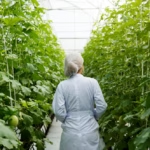In modern farming, precision agriculture is a key driver of efficiency, productivity, and sustainability. One of the most transformative technologies in this field is Global Positioning System (GPS) technology. By integrating GPS into their farm management systems, South African farmers can make data-driven decisions, optimize their resources, and enhance overall farm performance. Here’s a guide on how farmers can use GPS for effective farm management.
1. Field Mapping
GPS technology allows farmers to create precise field maps, which are essential for tracking different soil types, crop health, and productivity across various sections of the farm. By marking coordinates on these maps, farmers can easily identify specific areas that need attention, whether it’s irrigation, fertilization, or pest control. These maps also help in planning crop rotations and managing different land parcels effectively.
How to Implement:
- Use GPS-enabled equipment like tractors and sprayers to record field data.
- Input this data into farm management software to generate detailed maps that help with field analysis.
2. Precision Planting and Seeding
GPS technology is a game-changer when it comes to precision planting. Using GPS systems, farmers can plant crops in uniform rows with accurate spacing. This reduces overlap, minimizes seed wastage, and ensures optimal use of field space. It also allows farmers to plan planting at specific soil depths, improving the efficiency of their seeding process.
How to Implement:
- Equip tractors with GPS-based auto-steering systems.
- Use precision seeding equipment that can plant based on GPS coordinates.
3. Guided Spraying and Fertilization
GPS-enabled systems can be used to guide sprayers and fertilizer applicators to apply products only where they are needed. This ensures that farmers don’t apply excessive chemicals or fertilizers, which reduces costs and minimizes environmental impact. It also helps in reducing the risk of soil degradation and water contamination, ensuring sustainable farming practices.
How to Implement:
- Use GPS-controlled sprayers to follow specific routes, avoiding over-spraying or under-spraying.
- Integrate variable rate technology (VRT) to apply fertilizers and pesticides based on field variability, as mapped out using GPS.
4. Monitoring Livestock
GPS tracking can also be beneficial for farmers managing livestock. By attaching GPS collars or tags to animals, farmers can monitor their movements, track grazing patterns, and ensure that the animals are grazing in designated areas. GPS technology helps in managing pastures and can also reduce the risk of livestock theft or loss.
How to Implement:
- Use GPS collars or tags for livestock.
- Monitor movement data using farm management software that integrates GPS tracking.
5. Irrigation Management
Effective irrigation is essential in South Africa, especially in areas that experience water scarcity. With GPS technology, farmers can precisely control the application of water, ensuring that only the required amounts are used in each part of the field. This optimizes water usage, reduces waste, and contributes to more sustainable farming practices.
How to Implement:
- Use GPS-guided irrigation systems to apply water based on soil moisture levels and weather conditions.
- Integrate irrigation systems with sensors that monitor field conditions in real time.
6. Harvesting
GPS can also play a crucial role in optimizing the harvesting process. By using GPS systems on harvesting equipment, farmers can track the efficiency of the harvest, monitor crop yields, and adjust their methods to ensure that the maximum amount of crops is harvested at the right time.
How to Implement:
- Install GPS tracking systems on harvesters to collect yield data.
- Analyze this data to improve future harvesting strategies and crop management.
7. Data Collection and Analysis
One of the greatest advantages of GPS in farm management is its ability to collect large amounts of data, which can then be analyzed to improve farm operations. By tracking field activities such as planting, spraying, and harvesting, farmers can identify trends, make predictions, and optimize operations.
How to Implement:
- Use farm management software that integrates GPS data to create reports on yield performance, field conditions, and resource usage.
- Regularly analyze this data to make informed decisions and adjust farming practices as needed.
8. Cost Reduction and Efficiency
By utilizing GPS technology, South African farmers can significantly reduce input costs. This includes reducing fuel consumption through more efficient field navigation, minimizing fertilizer and pesticide use through precision application, and optimizing labor usage by automating certain farm processes.
How to Implement:
- Invest in GPS-based auto-steering systems to reduce fuel usage.
- Use GPS-based systems to monitor inputs and ensure that resources are being used efficiently across the farm.
GPS technology offers South African farmers a powerful tool to enhance farm management practices, improve productivity, and promote sustainability. By adopting GPS for field mapping, precision planting, irrigation, livestock tracking, and more, farmers can make better-informed decisions, reduce costs, and improve environmental sustainability. As GPS technology continues to evolve, it will undoubtedly play a key role in the future of agriculture in South Africa.
By integrating GPS systems into their farming operations, South African farmers can stay competitive in an increasingly tech-driven agricultural landscape.








